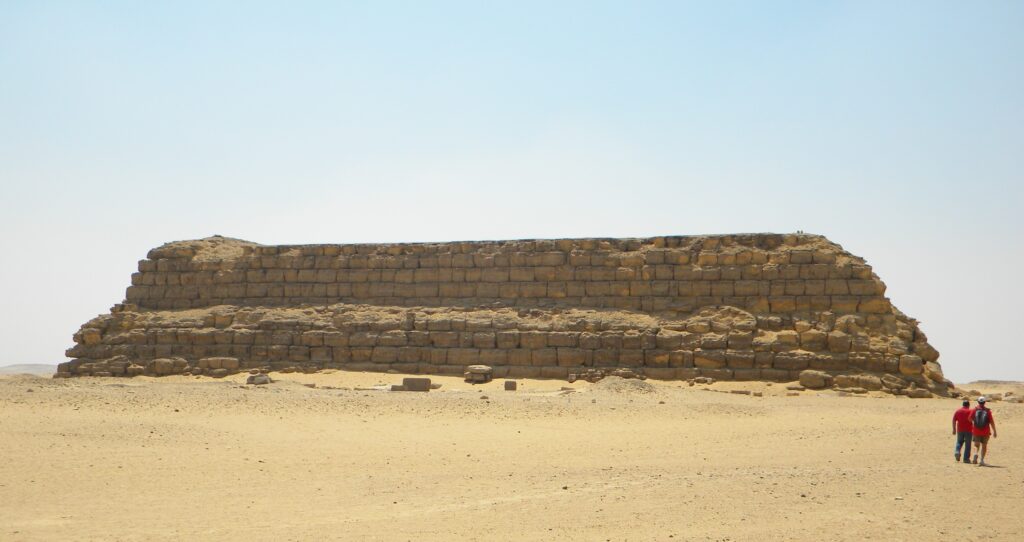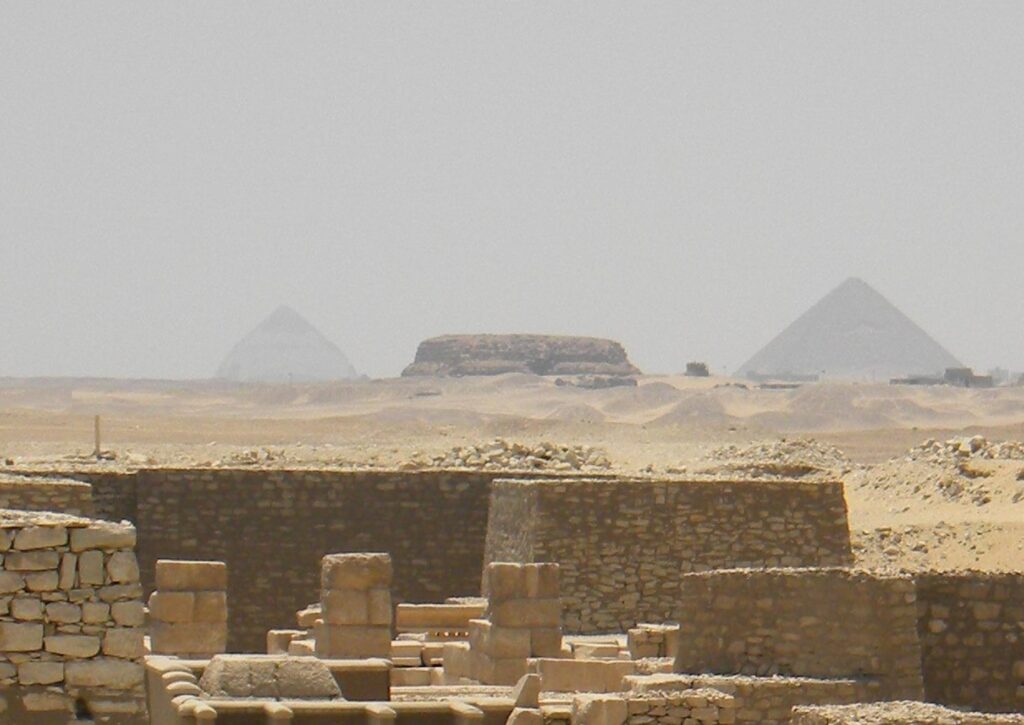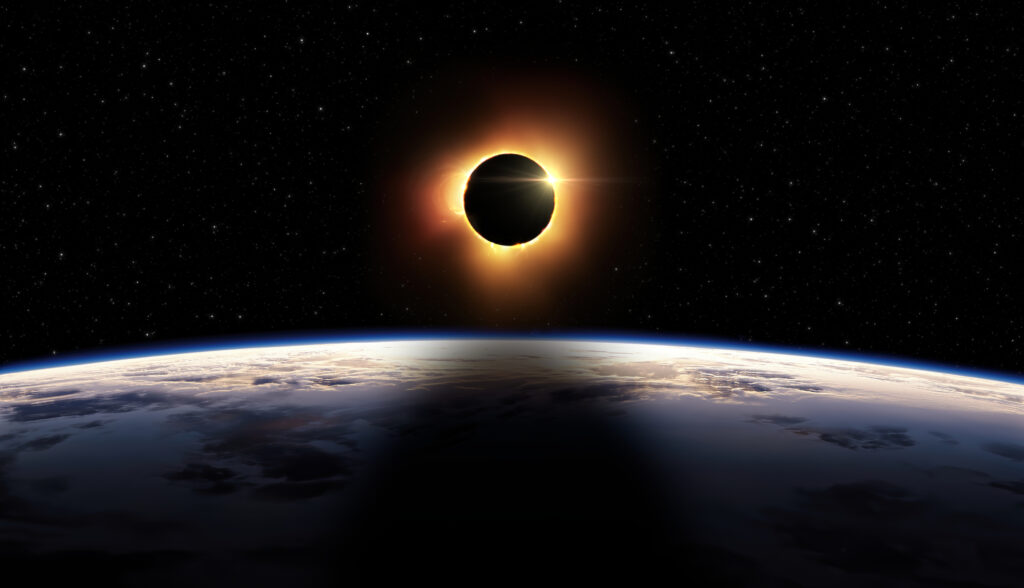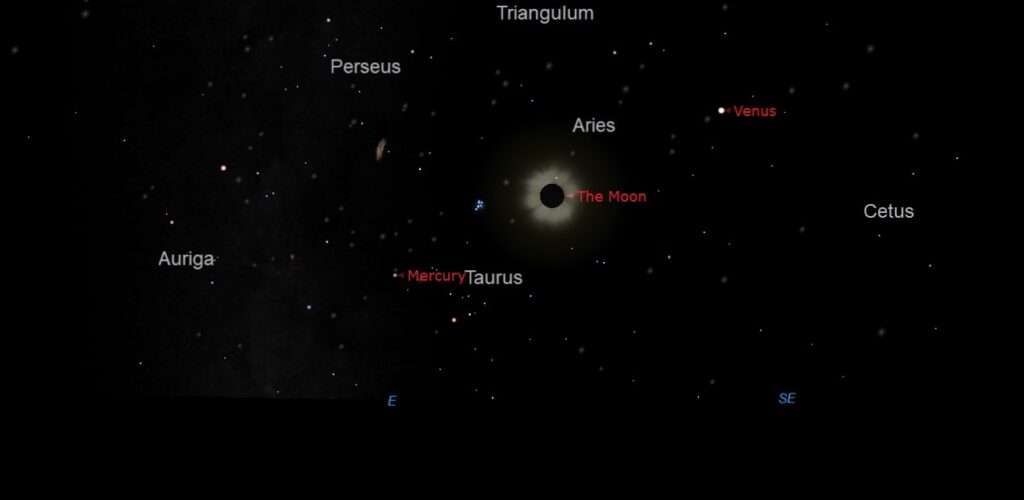
How have celestial phenomena influenced history, power dynamics, and human behaviour over the millennia?
This is the very question posed by Archaeoastronomy, a scientific and highly interdisciplinary discipline that studies the relationship between man and the sky through the analysis of ancient architecture and cultures.
We talked about this with Giulio Magli, Full Professor of Mathematical Physics at the Politecnico di Milano and the only lecturer in Europe to hold a university course specifically about archaeoastronomy.
During our talk, he took us on a journey 4,500 years back in time to the heart of the Fourth Dynasty of the Ancient Egyptian Kingdom, to reveal how astronomy, religion and power all played a part in the construction of the pyramids and the creation of symbols that would live on for centuries
Those unfamiliar with archaeoastronomy may not find it easy to understand what it is about. How would you explain it in lay terms?
Archaeoastronomy today is a scientific discipline, albeit a relatively young one: it was conceived in the late 1960s, so it has been around for little over fifty years now. The main purpose is to study the presence – or absence – of astronomical alignments, i.e. references to celestial phenomena within ancient architectural structures. This is the more technical side of the discipline.
But there is also another key purpose: to demonstrate whether these alignments are intentional, and therefore not accidental, and if they are, to try to interpret them in historical, religious and, very often, political terms and, in which case, in terms of power management. These monuments are, in fact, almost always linked to the management of power in ancient civilisations. This is why archaeoastronomy is a highly interdisciplinary discipline.
So I guess your course of study is also highly interdisciplinary?
I have a doctorate (PhD) in astrophysics and am a full professor of Mathematical Physics, and for a long time I was involved in relativistic astrophysics. Then I changed direction completely to study the relationship between man and the sky.
I developed the fundamental, more historical and humanistic background myself. This was necessary, of course, in order to then study in more depth certain aspects relating to the ancient civilisations. For example, I learnt how to read hieroglyphics.
This is fascinating. And I guess the study of ethnography and religions is also crucial.
You have to understand how power – and this is the key word: power – has historically been linked to religion and astronomy. Think of the pyramids in Egypt: it is a common misconception that they were built by slaves, when in actual fact they were built by skilled workers, people who did such work for a living.
The state invested considerable resources to build the pharaoh’s tomb. Why? Because, however much a megalomaniac the pharaoh might have been, the entire state still considered it essential to guarantee his passage to the afterlife. This was not for the sake of the pharaoh himself, but for the survival of the political and religious order.
The pharaoh was a living god. When he died, he ‘ascended to heaven’, and this passage guaranteed the continuity of power through his son, the new pharaoh, who was also deified. Ensuring the heavenly destiny of the pharaoh meant guaranteeing the continuity of life on earth, the fertility of the Nile, and the stability of the state.
This is where astronomy, architecture, religion and power come in. The fate of the pharaoh was literally written in the stars. And this is what forms the basis of archaeoastronomy

How did you become interested in archaeoastronomy and ancient civilisations?
It all started in Egypt, a country that has always fascinated me. Although I’ve worked in many other parts of the world – China, Israel, various UNESCO sites in Mexico – it was in Egypt that I had my ‘revelation’.
In the late 1990s, a team explored the inner conduits of the pyramid of Cheops, very special and complex structures that remain partially unexplored after more than 4,500 years. It was found that the conduits of the inner chambers are based on astronomy. This discovery completely changed my perspective and prompted me to look into this further.
More than twenty years have passed since then and I continue to be involved in archaeoastronomy.
On the more technical side again, what is the key discipline behind the study of archaeoastronomy?
The key technical discipline is surveying. In particular, topographic surveying, which involves the measurement of distances, angles and heights. Those of us who study archaeoastronomy are particularly interested in the height of the horizon. This is essential to reconstruct the sky as it was in the past. The reason is that the sky changes over time due to a physical phenomenon called precession, which slowly changes the position of the stars in relation to Earth. It does not apply to the Sun, although one often hears of the ‘precession of the equinoxes’, but it does apply to the stars.
We use software – the one I always recommend to my students is Stellarium, which is free and open source – to reconstruct a theoretical sky for comparison with the place in which you are.
For example, if the software says a star rises in the east, but a mountain lies one kilometre away in that direction, you cannot see that star because it is concealed by the mountain. The surveying technique consists precisely of surveying the local horizon.
Turning now to your research, can you tell us how it has developed and what you have discovered?
Our investigation focuses on a very short but extraordinary period of human history: the Egyptian Fourth Dynasty, which lasted only a century and a half, between 2600 and 2450 BC. In those few decades, several great monuments were built: first Dashur, then Giza.
When I talk about Cheops’ pyramid, I always make the point that I am a professor at the Politecnico and that everything I say has been scientifically verified. This structure is 146 metres high with a base measuring 230 metres on each side, and contains eight million tonnes of stone. Eight million! And all this is absolutely true. These are numbers that make your head spin.
Then, suddenly, this extraordinary period came to an abrupt end with Pharaoh Shepsekhaf. And this is when the signs of a break from tradition began.

What changed with him?
Three main things.
Firstly, the suffix ‘Ra’, which identified his predecessors as sons of the Sun god, no longer appeared in his name. Gedefra, Kafra, Menkaura: all had ‘Ra’ in their names. The descendants of Cheops identified themselves as descendants of the Sun. He did not.
Secondly, he did not build a pyramid. He had an elaborate tomb made of carefully worked granite – 80-tonne lintels transported from Aswan, 800 km to the south, to be precise – but it was not a pyramid. It was more like a mastaba: of a lower, rectangular shape, typical of the tombs of officials. Although it was immense, formed of pyramid blocks and with the internal layout typical of pyramids, it did not have the symbolic value of the pyramid, which represented the ascent to heaven.
Thirdly, he chose a very special place. His predecessors before him used to build their tombs on the west bank of the Nile (where the sun sets and the dead come together to rise), looking towards the temple of the Sun at Heliopolis. He, instead, decided to build it on a site to the south, at Saqqara, from which Heliopolis, the sacred and symbolic landmark of the entire Fourth Dynasty, could not be seen. It was a deliberate break from the norm.
Did this also have historical consequences?
Absolutely. It was such a decisive turn of events that Egyptologists speak of a change of dynasty. After him began the Fifth Dynasty, which was to be even more closely associated with sun worship. From then on, each pharaoh built both a pyramid and a sun temple. These were huge buildings, unlike any others in Egyptian history.
How is this change from the Fourth to the Fifth Dynasty explained?
It has never been explained. Never.
Accurately reconstructing both the genealogy and the chronology of the pharaohs is really complicated. One must always keep in mind that we are talking about events that took place 4,500 years ago. Today, the chronology of the Old Kingdom has an approximation of about ±25 years. Which, for that era, is already a very good approximation.
Some scholars have suggested that Shepsekhaf was not dynastically legitimate, and perhaps a grandson rather than a son, or even a usurper. But there is no proof to back this up. The change therefore remains a mystery to this day.
My theory associates this sudden change with the appearance of an eclipse, which occurred exactly during the reign of Pharaoh Shepsekhaf in the first half of the 25th century BC, possibly between 2500 and 2450 BC.
Before you say any more on this matter, let’s cover the basics: what is an eclipse?
Often even my students don’t know what it is exactly until I explain it to them.
One must first of all start with the fact that the orbital plane of the Moon does not coincide with the ecliptic, i.e. the plane defined by the Earth’s orbit around the Sun. The orbital plane of the Moon is at an inclination of about 5° to this.
This means that it is rare for the New Moon to lie exactly between the Sun and Earth (solar eclipse), or for the Full Moon to lie after the Sun and Earth (lunar eclipse).
These three bodies — Sun, Moon and Earth — are almost never perfectly aligned. It is only when the Moon’s orbit exactly intersects the ecliptic at points known as ‘nodes’ does an eclipse occur. An eclipse therefore only occurs if the new or full Moon coincides with one of these nodes.
Then there is another fascinating aspect: purely by chance, the apparent dimensions of the Moon and the Sun, as seen from Earth, are almost equal — about half an arc degree. It is the one perfect event that allows for a total solar eclipse, where the Moon perfectly covers the solar disc.
A total eclipse is a remarkable event: the temperature drops several degrees, animals change their behaviour — birds return to the nest, dogs bark — and stars can be seen in broad daylight. First-magnitude stars become visible, and you can look at the solar corona with the naked eye, without protection (but only at the exact moment of the total eclipse!).
This is all part of the mechanics of the Earth-Moon-Sun system.
And the mechanics can be calculated: using astronomy software, one can trace the days when eclipses occurred, even thousands of years ago, with extreme precision.

This all sounds very clear and simple…
However, there is a problem: we know exactly when there was an eclipse. But not where it was seen in its entirety. Because the total eclipse is only visible in a narrow band about 200-300 km wide.
Where the shadow is cast depends on the rotation of Earth, and the rotation of Earth in time is not constant. Therefore, to know exactly where the shadow fell, one must estimate the variation of the Earth’s rotation over the millennia. Today, these models are quite reliable, and my colleagues who work on them are reasonably confident that they know where the shadow of an eclipse is cast over time.
According to these studies, a total solar eclipse crossed Lower Egypt on the 1st of April, 2471 BC
The totality covered Memphis, the capital of the kingdom, and also passed over Giza, Heliopolis and other sacred centres of the Delta, such as Buto. This is a very strong sign.
And there’s more: that eclipse can be simulated.
I’ll close my eyes and you can tell me what happened on that 1st of April.
It was a particularly impressive eclipse because the Sun rose already partially obscured, and then fell into total darkness. The blackout lasted more than six minutes — almost the maximum possible.
And in the sky that had so suddenly turned dark, stars significant to the Egyptian religion appeared, such as the Pleiades, Venus and Mercury.
We can therefore assume that Pharaoh Shepsekhaf considered the eclipse to be a bad omen: a sort of divine warning against continuing sun worship. From this arises the hypothesis that he wanted to bring the solar tradition of the Fourth Dynasty to an abrupt end.
This, of course, is only a theory. We cannot know for sure whether this was indeed the case. But there is hope we can find confirmation of it.

How so?
Each pyramid complex included, in addition to the pyramid, two temples: a so-called ‘funerary’ temple and a ‘valley’ one, connected by a causeway. For example, in Giza, the Sphinx is located in the Valley Temple of king Chephren. Even Shepsekhaf, who did not build a pyramid, still had a royal tomb complex. And in this case too, there was a funerary temple, a causeway and a valley temple. These two temples have not yet been excavated.
I do not know what might be found, but I do know that writing had already existed in Egypt for 700 years. So it is not impossible that some inscriptions will be discovered. I certainly don’t expect the words “I saw the eclipse!” to have been written, of course, but there might be something alluding to the context or events that took place.
I will be there on 21 June, while the Polish archaeological mission to the Mastaba al-Faragun, the tomb of Shepsekhaf, is underway. I hope something will come of it. Also because eclipses are hardly ever mentioned in Egyptian texts. And I don’t mean just this one: in general, it is very rare for the Egyptians to mention an eclipse. Very rare indeed.
If texts ever emerge that refer, for instance, to a link between Shepsekhaf and the Eye of Horus — which has sometimes been interpreted as an allegory of the eclipse (due to its association with Seth, etc.) — these could, well, greatly strengthen the hypothesis.
Is there any other research, perhaps in different contexts, where astronomical events have led to historical confirmation?
Yes, today we have a very clear view of many civilisations in the field of archaeoastronomy. In Cambodia, for example, there are monuments revealed to have topographical and astronomical correlations.
As far as eclipses are concerned, however, we have to look at somewhat later times. There are eclipses documented in Greek historiography that have been identified and also had a historical impact.
There is the Battle of Halys, also known as the ‘Battle of the Eclipse’, fought on the Anatolian peninsula and interrupted by an eclipse in 585 B.C., as recorded in the writings of the Greek historian Herodotus. Indeed, he stated that the fighting ceased when the sky darkened. It is an emblematic case: the astronomical event, again interpreted as a bad omen, brought the battle to an end.
That’s impressive. Do you know of other examples closer to our times?
Another extraordinary example of an unexpected astronomical event was in 44 BC. Octavian, who was not yet called Augustus, was celebrating the funeral games in honour of Caesar. A comet appeared. It is documented, so there is no doubt about it. It would later be called the ‘star of Caesar’ — the great star from which also derives a popular Italian expression associating the great star with good luck. This comet was also visible during the day — something that is rare but possible. And Octavian took the opportunity to say that the comet was the soul of Caesar ascending to the realm of the gods. And he, being the adopted son of Caesar, by implication became the ‘son of a God’. This is how the concept of emperor-divinity was formed in Rome.
And the event was recorded: Pliny wrote that Augustus saw that star and interpreted it as the deification of Caesar. But the principle is always the same. The pharaoh, 2,500 years earlier, did the same thing: he ascended to the stars. There has always been an association between power and heaven. Power, religion, astronomy and architecture.
Augustus, to celebrate this new divine identity, had not just one monument built, but an entire complex: the Campus Martius, the Ara Pacis, and he had the obelisk brought from Egypt… All to celebrate and reaffirm that he was the son of a God.
So far we have talked about archaeoastronomy applied to ancient, historical events. But is it ever applied to more recent, contemporary ones?
Yes, absolutely. Astronomical orientation is something I also try to teach my architecture students. In fact, they do not pass the exam if they have not independently analysed a site using the methods of archaeoastronomy. This is because, once they have learnt the method, they may decide to integrate it into contemporary projects.
And it has happened, even recently, that prominent architects have used methods of archaeoastronomy. As an example: in Baltimore, a memorial was built in memory of the victims of 9/11. To do this, an original beam from one of the towers of the World Trade Center was mounted on a precisely designed marble plinth.
This plinth, which looks like a sundial but isn’t one per se, has notches that mark – with shadows cast by the Sun – the key moments of the events of 11 September.
I hope that some of my students will one day be able to design something that captures these astronomical alignments and, possibly, in an exact manner.

And have you personally had occasion to apply archaeoastronomy?
Yes, and it gives me great pleasure to say so. I am honoured to be playing a part in the orientation of a nuraghe.
A team and I are carrying out a scientific project of experimental archaeology, which involves the reconstruction of a nuraghe using only ancient techniques: moving the stones with ropes and lifting them using wooden trestles, and so on.
The project is called NurTime, for which I am scientific advisor. We have already built an upper part of the tower, pulling up huge stones with wooden levers and manual labour. As the scientific advisor of the project, I say ‘we’ with pride.
But the most thrilling thing was actually orienting the nuraghe, because many nuraghi are oriented to the rising of the Sun on the day of the winter solstice. And so, after three thousand years, I’ve had the honour of orienting a new one, calculating the alignment at dawn at the winter solstice, using only ropes and stakes, as was done then. We use no GPS or modern technology.
Now, in that week of the year, the Sun will rise perfectly and forever more in axis with our nuraghe at Isperdas, near Gergei, in the heart of Sardinia. It has been like conversing, three thousand years later, with a Nuragic architect who never left a written word.
